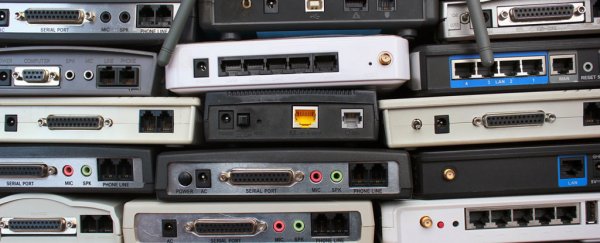Researchers have come up with a new Wi-Fi system that dramatically speeds up data transfer on congested networks.
The new system, called MegaMIMO 2.0, can transfer wireless data more than three times faster than the Wi-Fi we use today, and it also doubles the range of the signal.
Developed by a team from MIT's Computer Science and Artificial Intelligence Lab (CSAIL), MegaMIMO 2.0 could one day be implemented in the Wi-Fi routers we use at home, if device manufacturers like Cisco and Netgear end up incorporating the system into their products.
But the biggest advantages of the new technology would be seen in more crowded environments – like sporting events, convention centres, or airports – where hundreds or thousands of people are all trying to connect to the same internet signal.
As many of us have experienced, in public venues like these, the speed of the network can turn glacial, and that's a result of what those in the industry call 'spectrum crunch' – where there simply isn't enough wireless spectrum available for everybody to get their data quickly.
One of the ways of avoiding spectrum crunch is to add more wireless access points – in the form of multiple routers – for Wi-Fi users to connect their devices to. But this fix only goes so far, as each new access point creates a level of interference on the network that can also slow down data transfer.
"In today's wireless world, you can't solve spectrum crunch by throwing more transmitters at the problem, because they will all still be interfering with one another," says lead researcher Ezzeldin Hamed. "The answer is to have all those access points work with each other simultaneously to efficiently use the available spectrum."
And that's what MegaMIMO 2.0 is designed to do. The system coordinates multiple access points at the same time, with each transferring data on the same frequency, but without creating interference.
The team's key discovery was figuring out an algorithm that let multiple independent transmitters use the same spectrum without tripping over one another. In doing so, they solved a problem that has long puzzled wireless researchers.
"The problem is that, just like how two radio stations can't play music over the same frequency at the same time, multiple routers cannot transfer data on the same chunk of spectrum without creating major interference that muddies the signal," says one of the team, Hariharan Rahul.
MegaMIMO 2.0 builds upon a technology that virtually all wireless devices use today, called multiple-input multiple-output (MIMO). It's MIMO that lets devices like smartphones receive multiple signals from multiple transmitters – but up until now, using the system with multiple access points resulted in network congestion.
Thanks to the team's MegaMIMO 2.0 algorithm, that's no longer a problem.
"Since spectrum is scarce, the only way to improve wireless capacity is to add more access points and use some sort of distributed MIMO solution," says computer scientist Sachin Katti from Stanford University, who was not involved with the research.
"While there has long been skepticism that this could ever work in practice, [the] team has demonstrated that they can solve the many practical challenges of distributed MIMO networks."
To test the new system, the researchers set up a mock conference room, with four laptops travelling around the room on Roomba vacuums, and measured data speeds as they went. They found that MegaMIMO 2.0 boosted data transfers 330 percent when compared to conventional Wi-Fi.
There's no word yet on when we'll see this new system in action, but the researchers are in the process of commercialising the technology, and say they're in talks with industry partners to bring MegaMIMO 2.0 to the market.
We hope it happens – and soon – because we can't wait to live in a world where public Wi-Fi doesn't automatically mean spotty connections and lousy data speeds.
The research is published in SIGCOMM 16, and you can watch a video where the researchers explain the system below:
